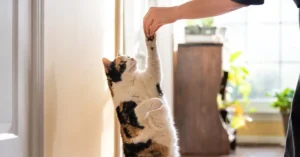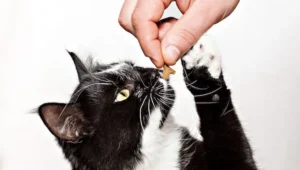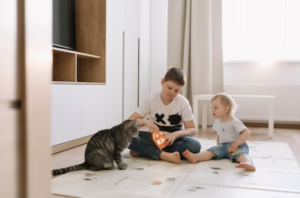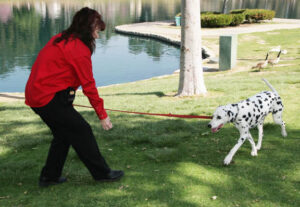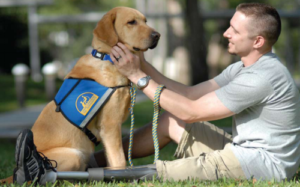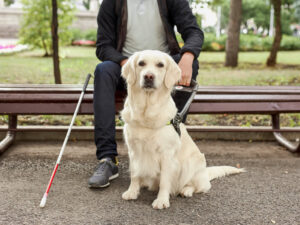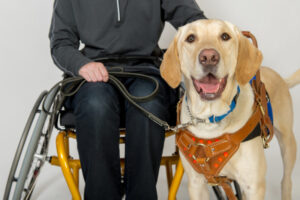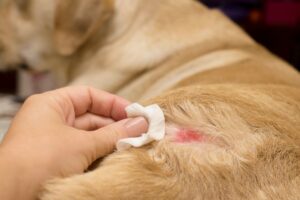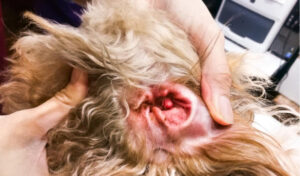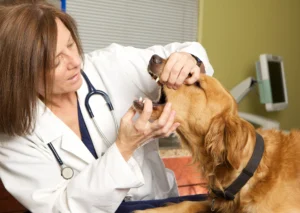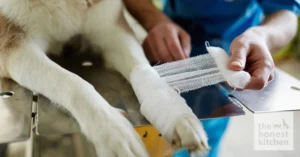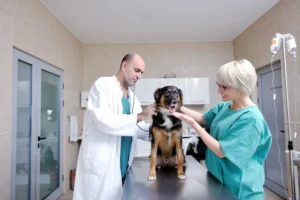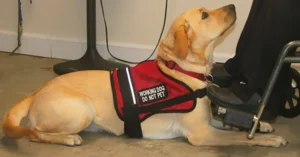Having a pet brings us a lot of happiness, companionship, and a sense of responsibility. As pet lovers, it’s our job to make sure that our furry friends are safe and healthy.
Table of Contents
Introduction
One of the best ways to protect our pets is to get them microchipped. This technology has changed the way lost pets are reunited with their owners. In this in-depth piece, we’ll learn all about microchipping your pet, benefits of microchipping , how to get your pet microchipped, and how much is it to get a pet microchipped
The Popularity of Microchipping Pets
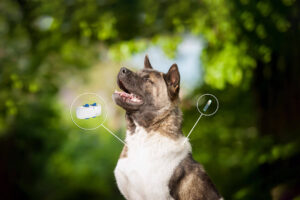
In a time when technology is everywhere, our lives are deeply connected to the things it has made possible. So, it only makes sense that our favorite pets should also benefit from this digital age. Microchipping a pet is a remarkable process that involves putting a tiny identification chip under the pet’s skin. It has become more common over the past few decades. This rise in adoptions shows how well it works and how much it has changed the lives of our animal friends for the better.
Microchipping a pet has gone beyond the old ways of identifying pets, giving pet owners a level of protection and peace of mind that has never been seen before. As our pets become more important to us, like family members, it becomes more important to keep them safe from things like getting lost or taken. This modest technology, which is about the size of a grain of rice, has the potential to ease the pain of losing a pet by helping the pet and its worried owner find each other quickly.
The fact that microchipping a pet is becoming more and more popular shows that our views about having pets have changed in a big way. It shows how much we want to use new ideas that not only make our pets’ lives better but also make our relationship with them stronger. As we learn more about the many different aspects of microchipping pets, a story starts to emerge that shows both how useful this technology is and how deeply we care about our furry friends.
How Does Pet Microchipping Work?

The new idea of microchipping a pet is based on a simple-looking device that could change the way we care for our furry friends. Radio-frequency identification (RFID) technology is used in pet microchips to create a strong link between pets and their owners that can’t be broken. Even though these chips are small and look like grains of rice, they hold a lot of information that keeps our pets safe.
These RFID gadgets serve as unique identifiers for pets, like a digital fingerprint that can tell one animal from another. When a pet is microchipped, the chip is given a unique alphanumeric name. This code acts as the pet’s unique signature and is tied to their identity for the rest of their lives. When a handheld microchip reader reads this code, it works as a key to a treasure trove of information that is stored in centralized pet registry databases.
The Process of Microchipping a Pet
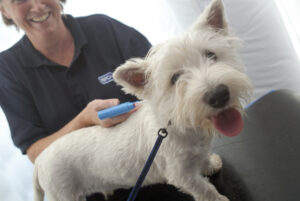
The process of putting a microchip in a pet is a great example of how far veterinary care has come. It is intended to cause the animals as little pain as possible while giving them a permanent way to be identified.
- A trained veterinary technician or doctor typically performs microchip implantation. It is similar to giving a regular vaccination.
- A vet places the microchip right under the pet’s skin, in the subcutaneous tissue, with the skill of a trained craftsman.
- Most of the time, the chip is placed between the shoulder blades. This unobtrusive spot makes sure that the chip stays in place and doesn’t cause any pain during daily activities.
- Most of the time, the process takes only a few minutes, and the insertion is often compared to getting a small shot. Most pets do surprisingly well during the process and feel very little, if any, pain.
It’s important to remember that putting in a microchip is a simple process, but it must be done by a trained professional, such as a doctor. Their knowledge makes sure that the setting is right, which lowers the risk of any problems. During the microchipping process, the care and attention to detail show how much vets care about both the pets and their owners.
After getting a microchip, pets can quickly get back to their normal lives, happily unaware of the small protector that is now tucked under their skin. From now on, the microchip will quietly stand guard, ready to do its job if it’s ever needed.
4 Benefits of Microchipping Your Pet

The beauty of microchipping pets is not just that it is a new kind of technology, but also that it gives pet owners a lot of peace of mind.
Traditional ways of identifying pets, like tags, can be lost or taken off, but microchips provide a permanent link between dogs and the people who care for them.This connection, which is made possible by cutting-edge technology and a quick, painless process, changes how we care for and protect our furry friends.
In a time when technology touches every part of our lives, the simple microchip shows how people’s creativity and care for animals can work together in a way that works well. By learning about the complicated technology behind these devices and the smooth way they are put in, we get a glimpse into a world where innovation, care, and unwavering commitment strengthen the bonds between pets and their owners.
- It Protects You from the Tragedy of Losing Your Pet
People and their pets have a deep and special relationship that is built on friendship, trust, and mutual love. But if a pet gets lost, both the owner and the pet can feel a wave of worry and stress at the same time, which can test their relationship. Without proper identification, a lost pet is much less likely to find its way back to its family. This leaves both the pet and its family with a lot of confusion and longing.
Traditional ways of identifying pets, like collars and tags, have been used for a long time to make sure they can be found and returned to their owners. Still, these outside markers are not perfect. Collars can come off, tags can get worn or unreadable, and sometimes they can even be taken off on purpose. When people are at their weakest, the microchip shines as a beacon of hope.
Unlike other ways, a microchip is a permanent and safe option that can’t be changed by chance. This tiny device is put just under the pet’s skin. It has a unique alphanumeric code that works as a digital fingerprint. This code is a link between the pet and its owner that will last forever and can’t be broken by wear and tear. When a cat with a microchip is found, a simple scan of the device can unlock the key to reuniting them with their family. This gives hope to a situation that would otherwise be full of hopelessness.
- It Protects Your Pets from Tragedies
The good things that microchipping does for animals go far beyond getting lost pets back to their owners. Microchips are a big part of changing the course of the lives of lost and abandoned animals, which is a sad fact of life. Most of the time, shelters are the last place these poor animals can go, so this is where microchipping’s effects are most evident.
Imagine a situation where a lost and lonely stray cat ends up in a shelter. This facility has technology for scanning microchips, so it can quickly find out if the cat’s owner is waiting for it to come back. With a simple scan, the microchip’s library of contact information can be a bridge between hopelessness and the possibility of reuniting the lost cat with its family.
If the owner can’t be found or the pet really doesn’t have a home, the microchip can still help save its life. Now, shelters can take care of these animals temporarily, making sure they are safe and healthy while they wait for a new chance to live with a loving family.
- It Can Stop the Theft of Pets
Pet theft throws a dark cloud over the otherwise happy world of having a pet. The heartbreaking truth is that stolen pets may end up in horrible situations, like being used in illegal breeding operations or sold to people who aren’t very honest. In a world where the safety of our pets is very important, microchipping is a powerful way to stop these bad things from happening.
Microchips are not just passive devices; they are silent sentinels that can tie a pet to its owner in a way that can’t be broken. With proof of ownership that can’t be argued with, this link is a powerful tool in the fight against pet theft. If potential thieves know that microchips can be tracked, they might not try to steal a pet. Even if a stolen pet is found by the police or ends up in a rescue, the microchip will let you know what happened. It provides proof that can’t be argued with, making sure that stolen pets are returned to their proper owners and that those who stole them are held responsible.
- It Shows Your Care for Your Pet
The value of pet identification goes beyond the world of technology. It shows how much pet owners love and care for their pets. By getting our pets microchipped, we show that we want to protect them from the pain of getting lost or stolen. By doing this, we show that we care about improving the lives of animals and keeping the bond we have with our furry friends. In a time when there is a lot of doubt, the microchip is a sign of hope and proof that technology can help people and animals feel more connected and compassionate toward each other.
Process of Reuniting a Lost Pet
Scanning for Microchips
Imagine how sad it would be for a pet to get lost and be separated from its loved ones. In these uncertain times, the technology of microchipping shines as a bright light of hope, able to reunite lost pets with their owners in a matter of minutes. The first step is easy but very important: “Looking for Microchips”.
Veterinarians, shelters, and animal control officers who watch out for animals all play a part in this complex web of reunion. With the help of handheld microchip scanners, these people can access the data trail that is stored in a pet’s microchip. The scanner, which is not much bigger than a remote control, sends out a radio-frequency signal that tells the microchip to react with its unique identification number. This number, which is like a secret code, is a ticket that lets the pet’s family get access to important information.
The secret microchip is found when the scanner is gently moved over the pet’s body. The beep or lit-up indicator sounds a triumphant note and lets you know that a happy meeting might be on the way. This moment, made possible by technology and kindness, connects the pet’s current state of insecurity to the promise of a familiar hug.
Getting in Touch with the Owner
When the number on the microchip is found, a digital breadcrumb trail is started that leads to the pet’s owner. This trail, which was carefully laid out in a centralized pet tracking database, shows how connected pet care is today. The contact information for the pet’s family and the unique number on the microchip are a source of hope.
Responsible caretakers of lost pets, like animal shelters, kind vets, and hardworking animal control agencies, have the sacred duty of getting in touch with the owner. This act of contact is a symphony of speed and kindness, combining the efficiency of technology with an awareness of the emotional weight of the situation.
The reassuring ring of a phone, the soft sound of an email notification, or even the modern trill of a push notification on a smartphone can all bring people back together. Voices on the other end of the line show sympathy and understanding, giving comfort to upset owners and reassurance to worried pets. With every word, a connection is made between the world the pet has walked into and the safe place it has at home.
The Reunion
Reuniting lost pets with their owners is a complicated process that shows a patchwork made of technology, kindness, and the fact that everyone loves animals. Microchipping is more than just a way to identify a pet. It can help bring back lost relationships, give comfort to worried people, and show how powerful innovation can be in the field of pet care.
In a time when distances are measured in digital pulses and time is measured in fractions of a second, the process of reuniting lost pets with their owners is a strong reminder of the ties that have always existed between people and their pets.
The soft hum of the scanner, the complex structure of the database, and the voices announcing reunions all come together to make a symphony of hope. This shows that in the world of pet microchipping, technology is tightly woven with compassion and a firm belief in the long-lasting bond between pets and their loving owners.
Note: There might be affiliate links mentioned here. We may receive a commission if you purchase a product through an affiliate link. There is no additional charge for you. Please do your own research before making any online purchases.
Regulations of Microchipping a Pet
Technology and laws are two of the many lines that make up modern pet care. Together, they tell a story of responsible ownership and protecting the bonds between people and their animal friends. As the importance of pet identification becomes more clear, governments all over the world have begun to understand the important role that microchipping plays in making sure our furry friends are safe and healthy. Even though these laws have different details, they all have one thing in common: they all stress how important it is to register pets to protect their lives.
There are many different kinds of rules that were made to help animals and encourage responsible pet ownership. Some places promote microchipping by spreading the word about its benefits and encouraging pet owners to be cautious and get their animals microchipped. Other places are more aggressive and require microchipping in certain situations, like when a pet is adopted, when it travels internationally, or when it needs a license. This help from the government gives pet owners both a guide and a gentle push in the right direction. This helps to create a mindset of responsibility and accountability.
Pets Who Travel Overseas and Have Microchips Can Cross Borders
Outside of our homes and towns, the idea of microchipping becomes even more important because it helps connect pets and their owners over long distances. Once a practical puzzle, traveling internationally with pets has become much easier since microchipping became a part of import and export rules. This good mix of technology and legal standards makes sure that pets can cross borders without losing their identities.
Pet Microchipping acts as a digital passport for pets and can even go on trips across foreign borders. This way, their identity is always safe, no matter where their adventures take them. Many countries have made microchipping an important part of their rules for importing and exporting animals because they know it makes it easier to keep track of animals when they move across borders. The chip’s unique identification number becomes a universal language that lets customs agents and animal control workers quickly and correctly link each pet to its owner.
When traveling internationally, microchipping a pet is more than just a way to identify them; it also protects them from getting lost or confused. In the chaos of foreign travel, there is a real chance that pets will end up in places or situations they don’t know. Microchips, on the other hand, put an end to these worries by giving pets and their families a real, reliable way to stay in touch. This, in turn, makes the trip less stressful for both pets and their owners, as it shows how strong their bond is across countries.
The Combination of Technology and Law
In the big picture of pet care, the combination of microchipping and laws shows how caring and duty are spreading around the world. These laws, whether they are gentle suggestions or strict rules, protect the lives of pets and make it easier for people to travel internationally.
The combination of technology and laws makes pet owners’ caring voices louder, as they accept microchipping not only as a technological marvel but also as a way to show they care about the well-being of their pets.
As these rules continue to change and adapt to new ways of taking care of pets, they leave a permanent mark on the way people and animals interact. This partnership between legal systems and microchip technology echoes across countries, cultures, and languages, making a beautiful symphony that pet owners all over the world can feel. In this symphony, microchipping stands not only as a way to identify a pet but also as a universal language of love, compassion, and the shared duty we all have for the well-being of our beloved pets.
The Myths and Concerns About Microchipping a Pet
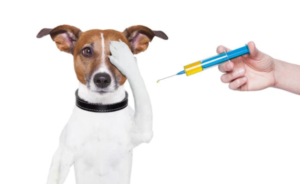
Most Common Myth: Microchipping is Painful
When it comes to caring for pets, myths and misunderstandings can cast a bad light on even the best and most helpful practices. Even though microchipping has been shown to have benefits, it is not immune to these myths. One common worry is that the process of inserting a microchip into an animal causes pain or discomfort. Even though this mistaken idea is easy to believe, it is very far from the truth.
Comparing microchipping to getting a shot is a comforting way to think about it. The process is quick and easy, like giving an injection, and is done with the utmost care by trained veterinarians. The process usually includes putting the tiny microchip under the skin of the pet, which is easy and takes almost no time. Most pets can handle the process with little or no pain. Their safety, both physically and emotionally, is important, and the gentle way they are treated during microchipping makes sure that doesn’t change.
The Privacy Concerns of Pet Microchipping
Data protection is another real worry about microchipping that people should have. Personal information is a valuable commodity these days, so pet owners are usually wary about giving out too much information. The idea of putting personal information on a microchip can make people nervous and raise questions about how the information could be accessed or used without permission.
Because of these worries, reputable microchip manufacturers and cat registry databases have taken strong steps to protect owner information. These systems are made with security measures that are as strict as those used by financial institutions. To keep owner information from getting into the hands of people who shouldn’t have it, databases are encrypted, authentication methods have multiple steps, and access controls are very strict.
For data protection, it is very important to choose a well-known and trusted microchip provider. Pet owners need to do a lot of research and choose a service that has a track record of maintaining the highest security standards. By working with a reputable company, pet owners can put their information in a digital fortress that keeps it safe, giving them all the benefits of microchipping without giving up their privacy.
Accepting Pet Microchipping as a Boon
In the world of microchipping pets, it is important to debunk myths and address concerns to make sure that both pets and their owners are safe. By telling pet owners the truth about how easy microchipping is and how well data privacy is protected, we give them the power to make decisions that put their pets’ safety and security first.
In the end, the fact that we keep looking for the truth even when people tell us things that aren’t true shows that we care about taking good care of our pets. As the people in charge of our furry friends, we owe it to them to go on this journey of enlightenment, led by accurate information and with the goal of making sure our pets live long, happy, and safe lives.
Future of Pet Microchipping

Steps Forward in Pet Microchipping
Technology keeps getting better and better, and microchip technology is a great example of how innovation is always changing. Researchers and engineers try to push the limits more and more every day. This leads to improvements that not only make microchipping more effective but also change how safe and secure pets can be.
RFID (radio-frequency identification) and communication systems are at the heart of these changes. Once, microchips were about the size of a grain of rice. Now, they are smaller and more efficient, and their reading ranges have grown. This change means that identification can be done quickly and easily, which is a key part of getting lost pets back to their homes. Even though they are very small, these cutting-edge microchips have the power to change the way pets are identified.
The combination of microchips and GPS (Global Positioning System) technology is the apex of progress in microchips. Imagine a world where these modern marvels make it possible to track your pet’s exact location in real time. This new idea gives pets, especially those who like to go on adventures, an extra layer of protection. With the help of GPS technology, pet owners can keep track of their furry friends’ movements, even when they go to places they haven’t been before. This feature shows how much you care about your pet’s safety by using technology to improve not only their physical safety but also your peace of mind.
Clever Connection Between Pet Microchipping and Smart Devices To Care For Pets
As the line between the digital and real worlds becomes less thinner, putting microchip technology into smart products is becoming an exciting new frontier. Imagine that your smartphone, which is always with you in this day and age, becomes a way for you and your pet to communicate. The effects are huge and close the gap between pet and owner in a way that has never been done before.
Imagine that a pet owner gets a message right away on their phone when their pet goes outside of a certain area. This level of connection, which was once just a dream, is now on the verge of becoming a reality. The combination of microchips and smart devices could change the way we keep track of and care for our pets in ways that aren’t limited by distance or space.
This combination is more than just convenient; it also gives a deep sense of security. People who have pets can now stay in touch with them in ways that have never been done before, even when they are at work or on the road. This digital link doesn’t replace the physical ties; instead, it strengthens them and gives owners comfort and real-time information about how their pets are doing.
The Development of Pet Microchipping
The development of microchipping technology shows how hard people work to make things better, driven by a good desire to protect the lives and happiness of our pets. As we move through this world of innovation, the improvements in microchip technology and the way it works with smart devices show not just a change in technology but also a change in how we think about and care for our pets.
On this journey, we walk hand-in-hand with technology, embracing its promise to improve our relationships with our pets. We imagine a future in which microchips protect the past, present, and future by bridging distances, opening up new possibilities, and changing our role as caretakers of the animal world. With each new idea, we strengthen the trust between us and our pets. This creates a fabric of ideas, care, and a never-ending commitment to the health and happiness of our best friends.
FAQs
What does microchipping a pet mean?
When a pet is microchipped, a small identification chip about the size of a grain of rice is put under its skin. This item has a unique number that is linked to the owner’s contact information in a central database of pet registries.
How does microchipping a pet work?
Radio-frequency identification (RFID) technology is used in microchips. Each chip has a unique set of letters and numbers that serve as the pet’s digital fingerprint. This code leads to the owner’s contact information in the pet registry database when scanned with a handheld reader.
Is pet microchipping painful?
Microchipping a pet is a simple, quick process that is similar to getting a shot. Most cats don’t feel much pain during or after the procedure. The insertion is done by a vet or a trained worker to make sure the pet is healthy.
How does pet microchipping help when a pet is lost?
If a pet with a microchip gets lost and is later found, shelters, vets, or animal control officers can check the chip to find out who owns the pet. The unique number goes to the owner’s contact information, which makes it easy to get back together quickly.
Can pet microchips be lost or taken off like bands and tags?
The microchip is put under the skin of the pet, so it can’t be easily taken off or lost. The microchip is a lasting and safe way to identify an animal, unlike collars and tags that can fall off.
Is the information about me safe on the microchip?
Trustworthy companies that make microchips and pet registration systems use strict security steps to keep owner information safe. To keep data private, they use encrypted databases, multiple layers of authentication, and access limits.
Can microchips tell me where my pet is right now?
Some current microchips have GPS technology built in, which lets the location of a pet be tracked in real time. These high-tech chips add an extra layer of safety for pets, especially ones that tend to run away.
How does pet microchipping improve the well-being of animals?
Microchipping helps get lost pets back to their families quickly, which makes both the pets and their owners feel less stressed. It also helps lost and abandoned animals because shelters can find their owners or take care of them while they wait to be adopted.
Is pet microchipping against the law?
Many places have passed laws that either encourage or require microchipping of pets in certain situations, such as foreign travel with pets, pet adoption, or licensing.
How does a pet microchip stop a pet from being stolen?
Microchips keep pets from being stolen because they provide proof that can’t be argued with. If a stolen pet is found, the microchip’s unique code will link it back to its owner. This will make sure the pet is returned safely and hold the thieves responsible.
Conclusion
In a world where pets are important to us and our families, making sure they are safe and healthy is the most important thing. Microchipping pets has become a strong tool that not only strengthens the bond between people and animals but also protects our furry friends from the unexpected things that happen in life. Microchips have changed the way we deal with lost pets, pet theft, and foreign travel because they give us a way to identify them that is both reliable and permanent. As technology keeps getting better, the future of microchipping looks like it will bring even more improvements, making it even more important in the ever-changing world of pet care.























